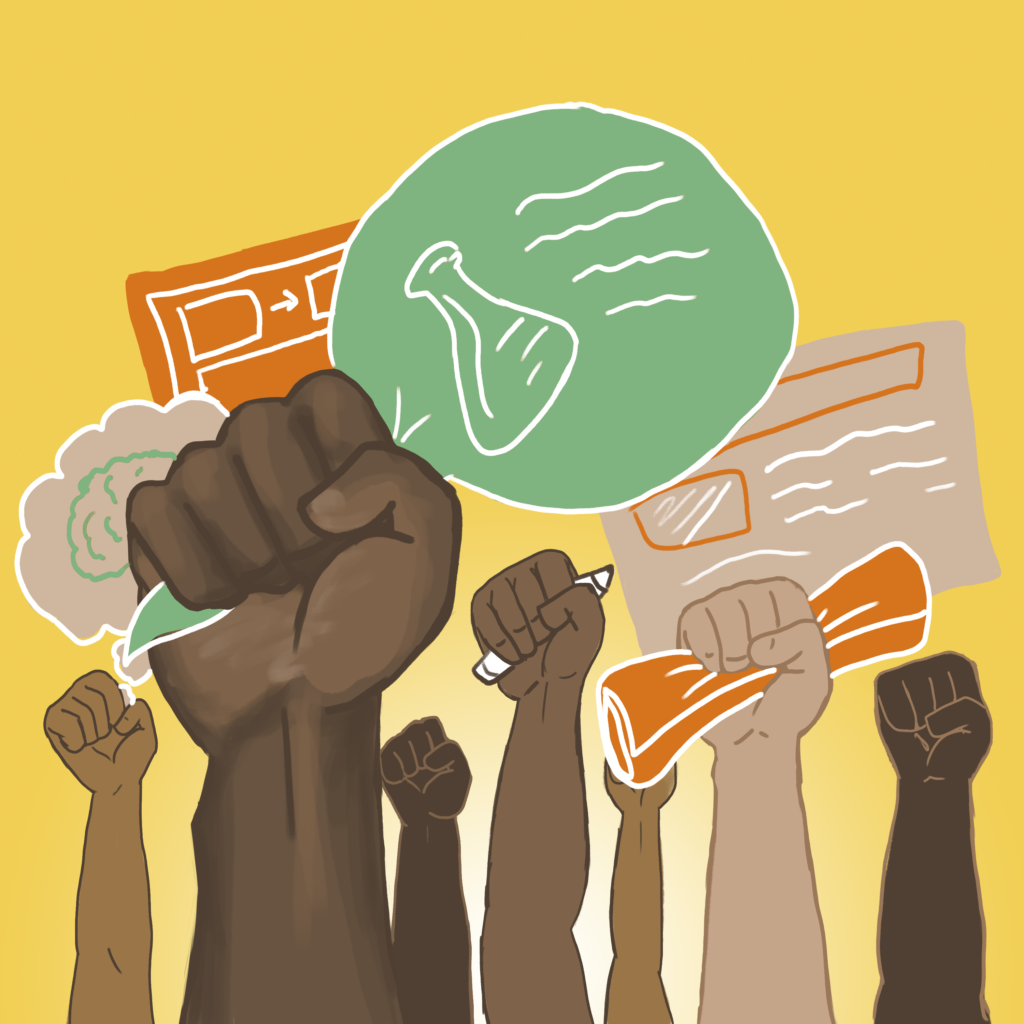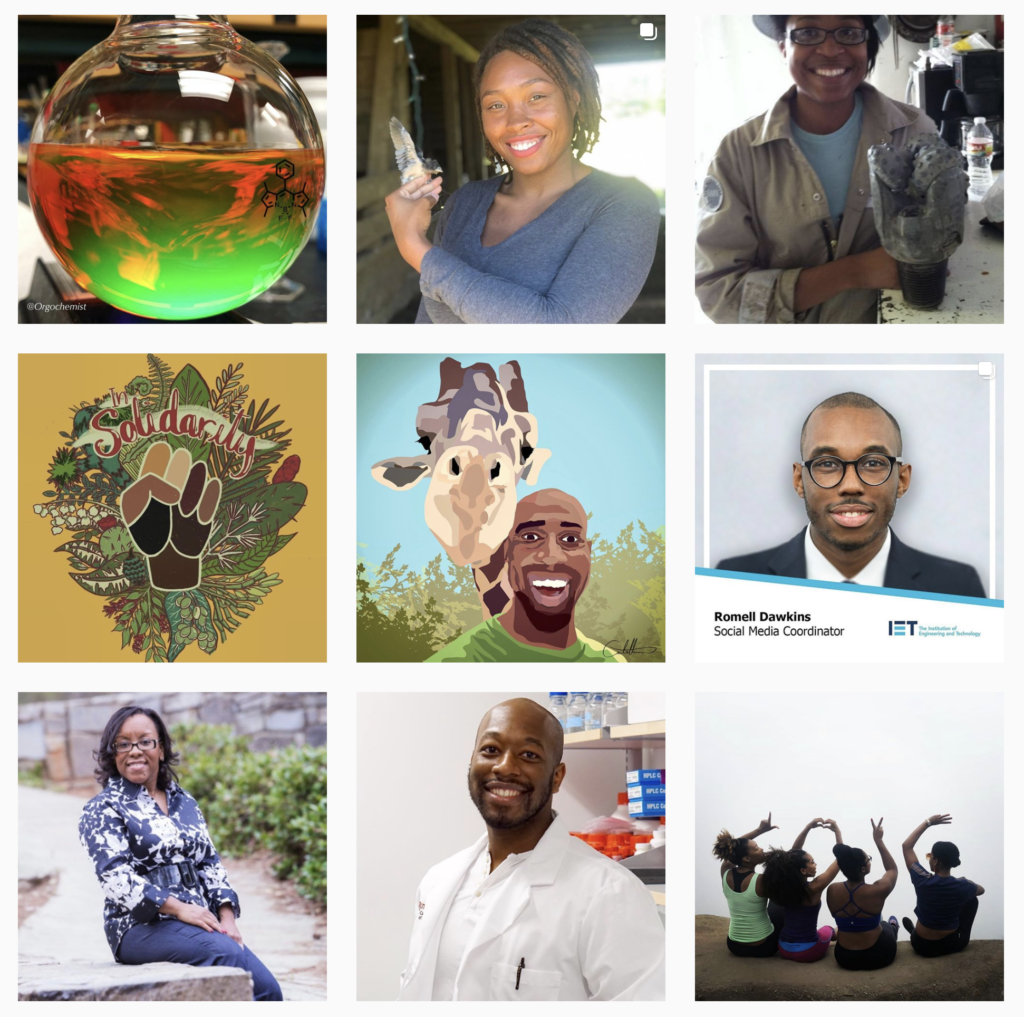
Art by DiAngele Augustus
In my time as an undergraduate researcher in psychology, I learned so much about building a diverse team and making sure all members feel heard and valued. I went to school in Georgia where Black students like myself were far from rare, yet we made up a very small portion of the student researchers in my department. I thought it was odd because we spent so much time in psych learning about things like cognitive biases and representation. So where were all the Black researchers?
Supporting and uplifting Black voices in any industry has to be intentional. Similar to how psychology researchers work diligently to create inclusive samples that are representative of the population, every business person must create a well researched plan to actually be inclusive. Most of the time a lack of diversity on teams is an unfortunate by-product of small social circles born of university or workplace loyalty. Social media hasn’t made the issue too much better since algorithms are used to show you more content you’ll likely enjoy, and less of anything new or different.
But there are ways to push through these barriers and become more supportive of talented Black people in your field.
This wasn’t easy for the psych department where I did research and it won’t be for you, but following these steps could be the difference between tokenizing people and creating meaningful business relationships. Tokenizing occurs when one person is assumed to represent their entire culture. Nobody wants to be your diversity hire. I’ve been there and so have many others. A solid action plan should include ways to overcome cognitive biases, ways to gather information from Black people, ways to implement the advice gained, and intentional direct effort on your part.
Ask yourself these questions to get started!
1. How do I plan to overcome cognitive biases?
Much of the homogeneity in work environments is not intentional. In fact it’s quite opposite. Little things in our cognition set us up to be more likely to spend time with people who remind us of ourselves or familiar places. This makes it easy to become comfortable in your social network of people who are more or less like you. Be aware that you must intentionally interrupt these judgements by learning about cognitive biases and using that research to form better hiring and recruitment practices.
2. Have I considered asking for help?
Whether you’re trying to decide if a product is racially insensitive or find solutions to make your team more diverse, you should always include Black voices in that process. There are people whose job is to do sensitivity readings or give advice on how to support your Black co-workers. You could even consider creating a focus group to get advice so long as you are always paying for that labor.
Never ask your Black friends, co-workers or employees to do this work, either. It puts them in a tough place due to power dynamics you may not have considered, and it still won’t fix the problem of you reaching outside your current social network.
3. Am I open to creative and diverse backgrounds?
Achievement and skill-based hiring could be a way you’re limiting your team. Do you really need Photoshop experience, or would experience in Krita do the same job? Must that article be written in Word, or is Google Docs experience enough? Due to systemic inequities that span the education systems, Black people may have had less opportunities to gain experience in certain programs and coursework. Giving inflexible requirement lists to check off creates an unnecessary barrier when there is an open source version of nearly every proprietary software. Similarly, the same lessons can be learned from various different courses.
4. When’s the last time I clicked a new hashtag?
How often do you leave your comfort zone? Most social media and work recruitment sites use some sort of algorithm to show you content you will enjoy. Sometimes it’s based on your location and other times it’s based on how many mutual contacts you may share with another person. This inadvertently blocks you into a repetitive social bubble of sorts.
A nice way to find new people is to explore new hashtags. Social media has given us a freedom to seek people out freely. Go look for some #BlackArtists and #BlackWriters and #BlackandSTEM experts. Many will have tagged themselves and their rates so you can find new team members easily.

A selection of posts from the #BlackandSTEM hashtag on Instagram.
5. Am I being genuine?
The most important part of supporting and uplifting Black voices is to do it in earnest. Be genuine and try to form a meaningful connection. There is no special way to treat a Black coworker. We like to be an integrated part of the team. Make room for feedback and be prepared to be called in on problematic team dynamics that may stem from a lack of inclusion in the past.
Supporting and uplifting Black people in science, scicomm and sciart must start with an intentional and well-planned push. It must start now.
Look at your body of work and ask, “Will everyone be able to relate to this or just people like me?” If you are doubting, go back and ask yourself the 5 questions above again. Be honest with your answers and do not be shamed into inaction. Reach out beyond your comfort zone and meet someone new.




